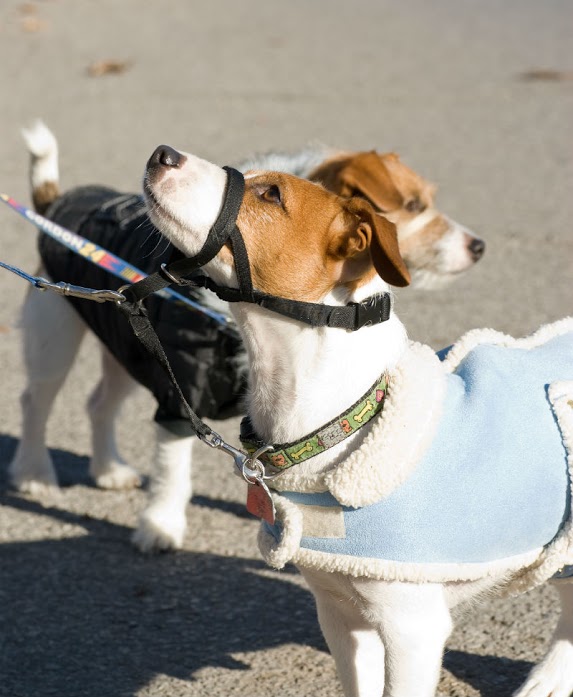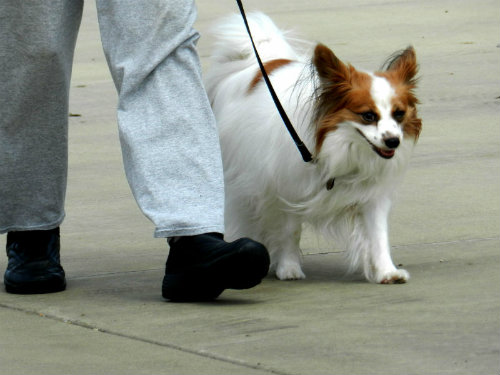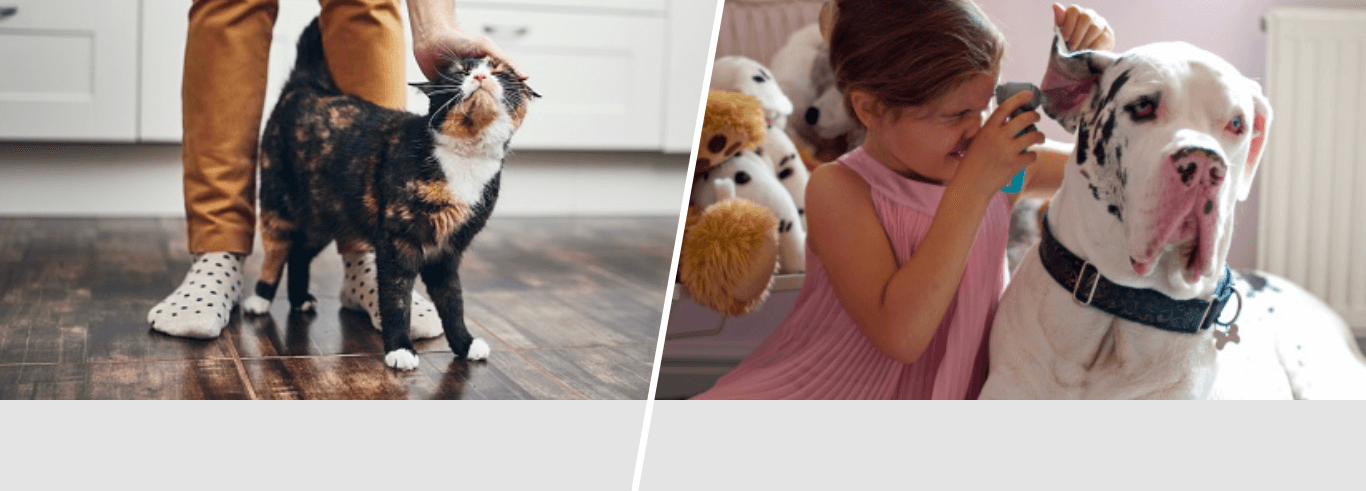Puppy training: How to train a puppy on a lead
It goes without saying that training a puppy can be a challenge and that’s certainly the case when it comes to puppy leash training, however, there are things you can do to make the process easier and more enjoyable for your pup. Getting your puppy to feel comfortable and at ease on a lead can be different for every dog. It might be a difficult process, but keeping your dog on a leash is a big part of ensuring its safety and the safety of other animals.
It’s important to understand the stress that some pups can feel if they aren’t given the time to properly get used to a lead before stepping outside properly, so here are our tips on how to avoid putting them under stress and ensure happy dog walking for you and your pup.
1. Get them used to wearing a collar
If you’re wondering how to get a puppy used to a collar, then we’ve got you covered. The first thing you need to do to ease your puppy into feeling comfortable on a leash is to get them used to the feeling of having the collar on. This can often cause a lot of panic for a dog who isn’t accustomed to it, so try to do it as gently as possible. Put the collar on so it sits firmly, but not too tight, and let them get used to it. Try putting it on during meal times or reward them with a treat whilst wearing their collar, this will encourage a positive association and leave them feeling less uneasy over time.
When it comes to removing the collar, make sure that it isn’t while your puppy is protesting or struggling against it as this can cause negative associations. Additionally, if you take it off while your dog is trying to get out of it then it will seem like their struggling has been rewarded and this will become learned behaviour.
2. Attach the lead
To get your dog used to the lead, start by letting them run around while it’s attached and getting them to come to you. Treats and games often work well for this. As your pup gets used to coming towards you, they will be much more responsive as you try to get them to walk alongside you.
Occasionally pick up the leash and gently bring your pup to you, this will get them used to the sensation of having you in control of their movement. When teaching your dog to walk on a lead for the first time you should use a space with limited distractions, i.e. the living room or a back garden. The dog should initially be off the lead to ensure he/she isn’t frightened and there is no temptation to pull on the lead by either the dog or owner.

3. Use puppy treats for training
Hold a treat next to your side and in front of your dogs’ nose to show him where to walk. Ask your dog to follow the treat and build up the amount of steps you take before you give the treat – then practice.
- Make the dog think a little and withhold the treat completely until the dog takes a few steps at your side. Practice and build up the number of steps before the dog is rewarded.
- Put a name or a cue to the behaviour and use that cue (heel, close etc) every time the dog performs that behaviour – then practice.
- Practice outside the home in more a challenging environment with distractions from other dogs, people, children, other animals etc. with the lead attached – and remember practice, makes perfect!
It is important to not drag or pull the lead too hard as this can be very distressing for your puppy and only increases negative feelings towards the lead. You may also want to consider the type of lead you select for your puppy as there are various different types.
Harnesses that fit the body are better for larger dogs while those which fit the face can offer more control but will need to be introduced to your dog with extra care to avoid them becoming scared.
4. Take them out
Now it comes to learning how to walk a puppy for the first time, and with their lead on. For some dogs, their first journey out with a lead on will come incredibly easy, but it may not always run smoothly for everyone. Don’t expect your pup to walk to heel straight away but reinforce training from puppy classes to help them learn the required behaviour.
The best way to get them to take to walking on a lead is to make them feel as relaxed as possible and this means you need to be relaxed too. It’s common for dogs to stop and freeze up if they start to become nervous or fearful and if your pup won’t move then you can try moving away or getting them to come to you with a treat. Neither you nor the dog should be using the lead to pull the other along; if your puppy tries to pull you on the lead, stand firmly but do not pull back. Use verbal communication to indicate what you want your pup to do and remember that puppy training is a gradual process that takes a lot of patience from both you and your pet.
A new puppy can be a challenging experience so if you’re introducing a new member to your family, it’s important to protect yourself from unexpected vet bills with Argos Pet Insurance provided by Pinnacle Insurance Ltd. Explore our dog insurance policies today.
Argos Limited is an Appointed Representative of Home Retail Group Insurance Services Limited (HIS). HIS is authorised and regulated by the Financial Conduct Authority (register number 314050). Registered office: 33 Charterhouse Street, London, EC1M 6HA (registered in England and Wales, no 04109436). HIS act as an introducer to Pinnacle Insurance Ltd, who sell, administer and underwrite the policy and who are authorised by the Prudential Regulation Authority and regulated by the Financial Conduct Authority and the Prudential Regulation Authority (register number 110866). Registered office: 4th Floor, Limelight, Elstree Way, Borehamwood, Hertfordshire, WD6 1JH (registered in England and Wales, no 01007798). HIS and Pinnacle Insurance Ltd are not part of the same corporate group.
We do not provide personal recommendations to customers.
 Sorry, our lines are now closed
Sorry, our lines are now closed




